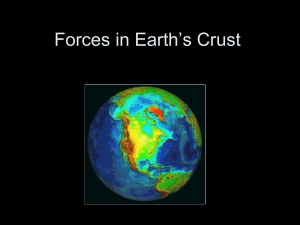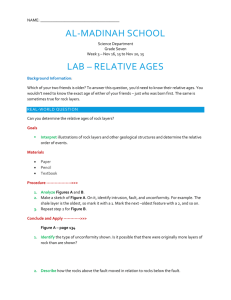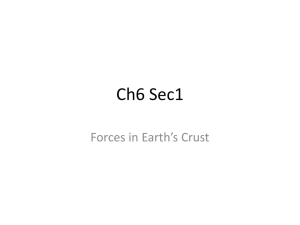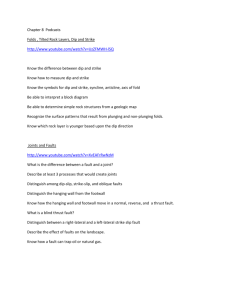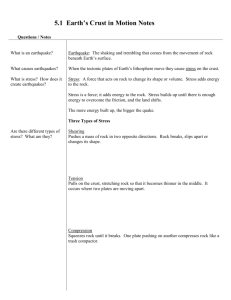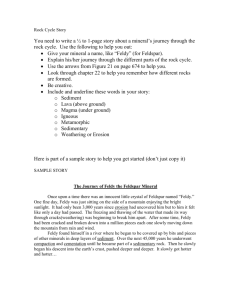Faulting—Chapter 13
advertisement
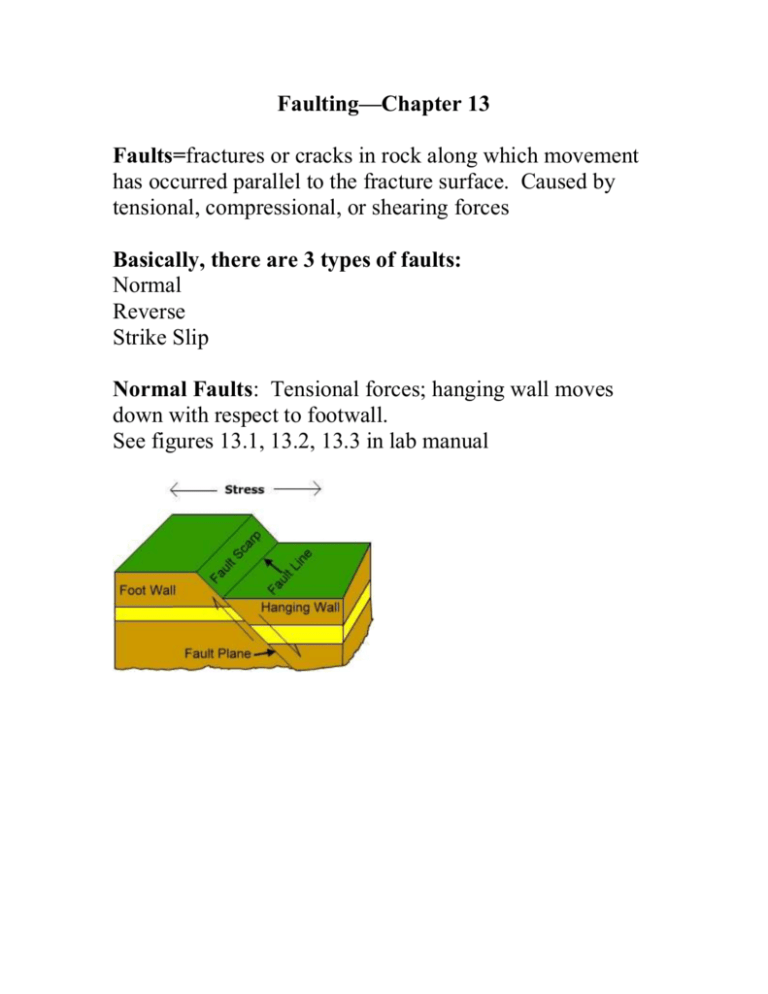
Faulting—Chapter 13 Faults=fractures or cracks in rock along which movement has occurred parallel to the fracture surface. Caused by tensional, compressional, or shearing forces Basically, there are 3 types of faults: Normal Reverse Strike Slip Normal Faults: Tensional forces; hanging wall moves down with respect to footwall. See figures 13.1, 13.2, 13.3 in lab manual Reverse Faults: Compressional forces; hanging wall moves up with respect to footwall. See figures 13.4a and 13.4b in lab manual Strike-Slip Faults: Shearing forces; fault blocks slide parallel to the strike or trend of the fault surface. Ex.-San Andreas fault, CA. See Figure 13-5 in lab manual Folding AND Faulting—See figure 13.6 in lab manual. In this example, a plunging syncline has been faulted. Complex, but CAN be understood Rules for interpreting geologic structures: 1. The upthrown side of a normal or reverse fault will be eroded to the level of the down thrown side in time. 2. Contact lines and associated rock formations always shift in the direction of dip as the land surface is lowered by erosion Unconformity—surface that represents a break in earth history. 3 types: Disconformity—type of unconformity where erosion surface is parallel to younger rocks above and older rocks below; see fig. 13-7 in lab manual Angular unconformity—results from erosion of deformed sedimentary rock followed by deposition of younger, horizontal sedimentary rock; see fig. 13-8 in lab manual Non-conformity—results from erosion of older igneous/metamorphic rock followed by deposition of younger, horizontal sedimentary rock; see fig 13-9 in lab manual
